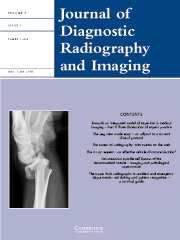Article contents
The design, implementation and evaluation of electronic objective structured clinical examinations in diagnostic imaging: an ‘action research’ strategy
Published online by Cambridge University Press: 01 February 2005
Abstract
Aim: This paper discusses the design, implementation and evaluation of an electronic version of an Objective Structured Clinical Examination (e-OSCE) for student assessment in undergraduate and postgraduate programmes in diagnostic imaging.
Assessment design: Web-authoring software and multimedia manipulation tools were used to design interactive web pages. The use of this software, in addition to the authors' experience of assessment, permitted the development of a dynamic environment rather than cross-application switching between various software packages.
Method and data collection: Over a 6 month period, the researchers participated as facilitators in six action research cycles of problem solving, involving 33 students. The students were either undergraduate diagnostic radiographers, or practitioners studying for a postgraduate qualification in medical ultrasound. Data was collected using the following sources inter alia; reflective diaries, invigilators' notes and observations during the assessment process and student evaluation forms.
Results: Each of the action research cycles resulted in the authors developing and further enhancing the overall design of the web e-OSCE, in terms of user-friendliness, interactivity and navigation facilities. Although students expressed initial anxieties, they rated their overall experience positively.
Conclusion: Ultimately, this form of assessment is considered to be cost effective in terms of staff and equipment resources, as well as student preference. The researchers would recommend the use of e-OSCEs as an effective means of assessing various learning outcomes, at differing academic levels, in both undergraduate and postgraduate imaging programmes.
Keywords
- Type
- Original Article
- Information
- Copyright
- © 2004 Greenwich Medical Media Ltd
- 3
- Cited by


